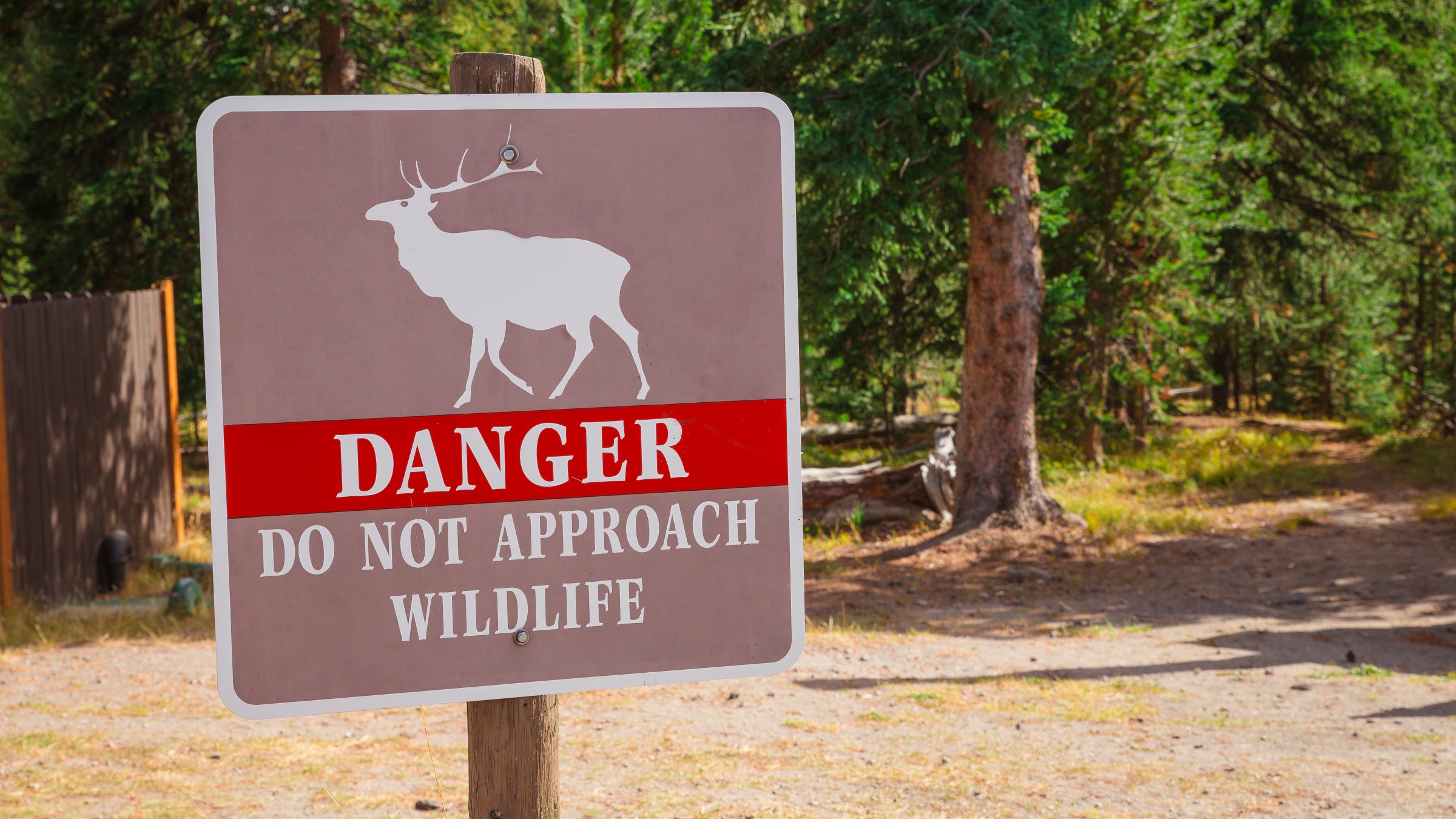The National Park Service Warns Visitors to Stay Away from Elk

(Photo: Elena Pueyo/Moment via Getty Images)
Yellowstone National Park officials recently issued a warning to visitors, encouraging them to stay away from bull elk during rutting season, which typically runs from mid-September through October.
Officials stated: “Bull elk are unpredictable during this time of year and people have been severely injured.” For this reason, park officials are encouraging visitors to stay 25 yards away from the animals, and to avoid getting close to snap photos.
Elk are more likely to bugle during rutting season, which is one reason why visitors flock to witness these animals in the Fall. According to Rocky Mountain National Park officials, the bugle allows male elk to blow off some steam while releasing pheromones for their female counterparts. Male elk are also more likely to lock horns in the fall to demonstrate dominance and make themselves appear more attractive to female elk, which can create a unique viewing opportunity for wildlife enthusiasts.
While the rutting display can be fascinating to witness, it can also put visitors at risk. During mating season, bull elk are known to be particularly aggressive to both humans and vehicles. They will often charge anything that comes too close to both themselves and the female elk. To exhibit agitation, elk may paw the ground, thrash around bushes, and direct their antlers in your direction.
At any given time, estimates suggest that there are 10,000 to 20,000 elk living in Yellowstone National Park. During rutting season, it is more common to spot herds in the northern ranges of the park.
The National Park Service’s warning comes just months after a number of dangerous wildlife encounters. In April of 2023, one man was knocked down by an elk while he fumbled with his phone. Two months later, visitors captured a video of a bull elk charging a tourist who was located a little bit too close for comfort.
Elk usually attempt to stay away from humans, but their behavior can be hard to predict. Mating season further increases the potential for male aggression, making charging more of a risk. If an elk does charge, park officials suggest that visitors place themselves behind a large object like a car or a building to avoid contact.